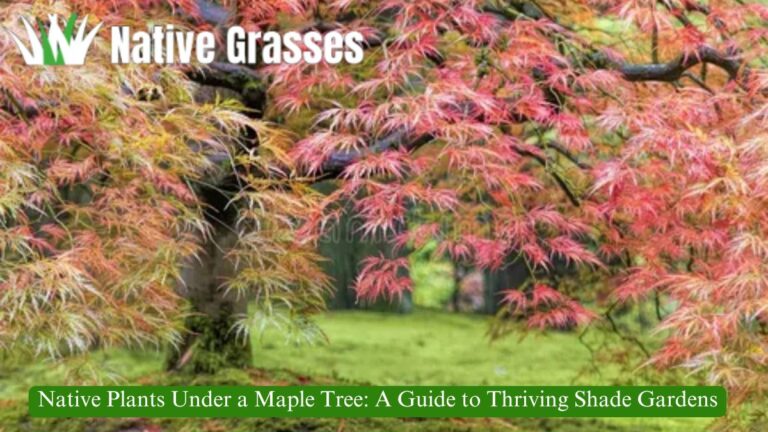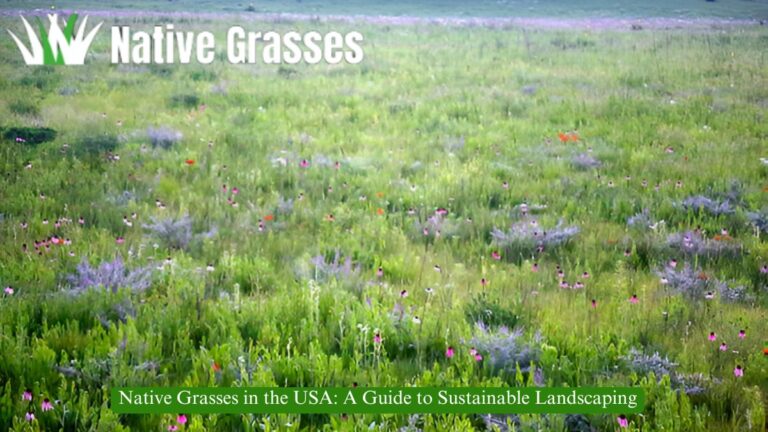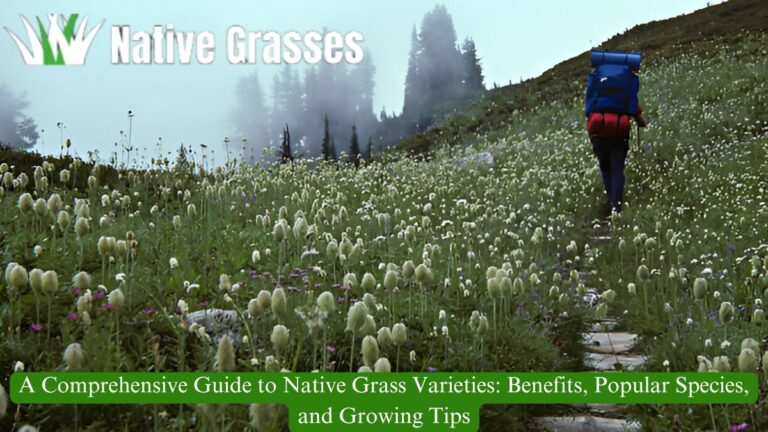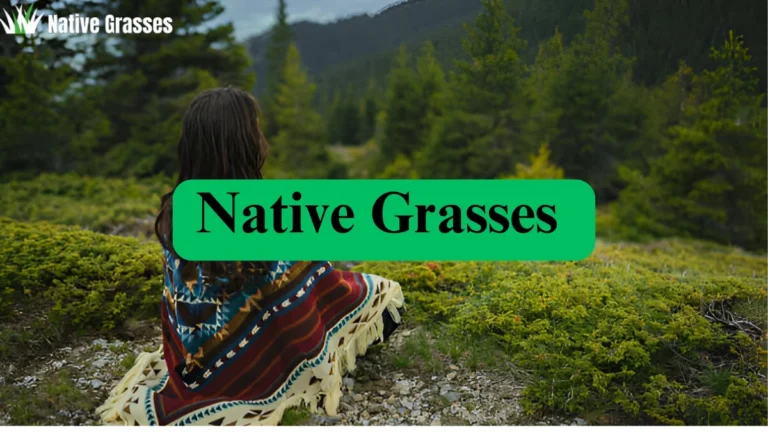The Power of Native Grasses: Benefits for Landscape and Environment
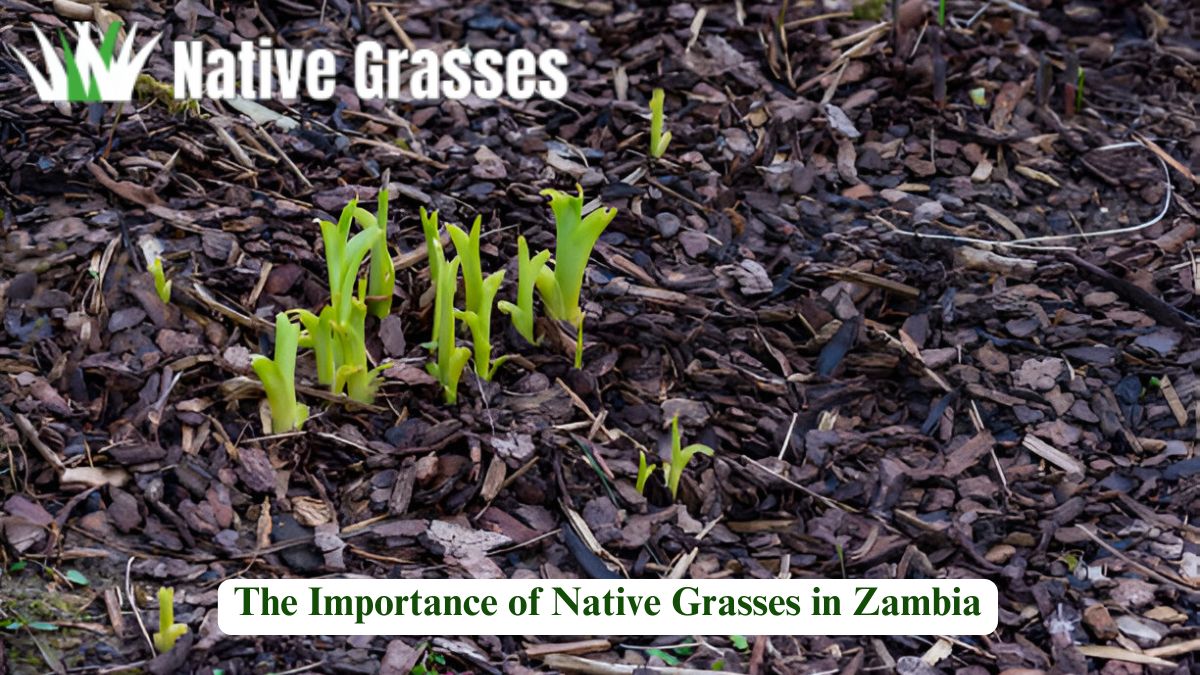
Native grasses, often overlooked in favor of flowering plants and shrubs, are incredibly important to the ecosystems they inhabit. From providing crucial habitat for wildlife to improving soil health and conserving water, these unassuming plants pack a powerful punch. In this article, we’ll explore everything you need to know about native grasses, their ecological benefits, and how you can incorporate them into your landscape for a more sustainable and beautiful environment.
Native grasses are often overshadowed by more glamorous plants in landscaping, but their contributions to the environment are both profound and irreplaceable. Whether you’re an avid gardener or simply someone interested in sustainable landscaping, understanding the role of native grasses in ecosystems and how to use them effectively in your garden is crucial.
This guide will introduce you to the diverse world of native grasses, from the ecological benefits they provide to tips on how to grow and care for them. We’ll also delve into their broader implications for soil health, water conservation, biodiversity, and even agriculture. With their low-maintenance nature and ability to thrive in a variety of conditions, native grasses are becoming an increasingly popular choice for sustainable landscapes.
What Are Native Grasses?
Native grasses are plant species that have naturally evolved in a specific region and are well-adapted to the local climate and soil conditions. These grasses differ from non-native or invasive species because they have evolved alongside the region’s local ecosystem, supporting a healthy balance of wildlife and environmental processes.
Types of Native Grasses
There is a rich variety of native grasses, each with its unique characteristics. These grasses can generally be divided into two categories based on their growth seasons:
- Warm-Season Grasses: These grasses thrive in hot, dry conditions and peak in growth from late spring to summer. Examples include Switchgrass (Panicum virgatum) and Little Bluestem (Schizachyrium scoparium).
- Cool-season grasses: These grasses prefer cooler climates and grow in the spring or fall. Popular examples include Ryegrass (Lolium perenne) and Fescue (Festuca spp.).
Geographical Variations
Native grasses are found in nearly every part of the world, with different species adapted to local conditions. For instance:
- North American Prairie: Known for grasses like Big Bluestem and Indiangrass, these plants are adapted to dry, windy environments.
- Mediterranean Grasslands: Native grasses in regions like Spain and Italy are built for drought tolerance and grow in thin, rocky soils.
Understanding the varieties native to your region is essential for ecological restoration and landscaping.
The Ecological Role of Native Grasses
Soil Health and Erosion Control
One of the most critical functions of native grasses is soil stabilization. Their deep and dense root systems prevent soil erosion, particularly on slopes and in areas with loose soil. This is especially important in regions prone to heavy rainfall or high winds, where the soil is at risk of being washed or blown away.
Fact: Native grasses can reduce erosion by up to 90% in areas where they are planted, according to research by the USDA Natural Resources Conservation Service.
Supporting Biodiversity
Native grasses support a wide array of wildlife. Their dense growth provides shelter for insects, birds, and small mammals, while their seeds are a vital food source. For example, Northern Harrier birds and Bobolinks rely on grasslands for nesting and feeding. Additionally, grasslands attract beneficial insects like pollinators and ladybugs, which help control pests naturally.
List of Wildlife Benefiting from Native Grasses:
- Pollinators: Bees, butterflies, and moths.
- Birds: Songbirds, pheasants, and quails.
- Mammals: Rabbits, voles, and foxes.
- Insects: Ants, grasshoppers, and beetles.
Water Conservation
Unlike many non-native lawn grasses, native grasses are drought-resistant and require far less water once established. Their extensive root systems help retain moisture in the soil, reducing the need for frequent watering. In drought-prone areas, native grasses are an excellent choice for water conservation efforts.
Tip: Native grasses can reduce water usage by up to 50% compared to traditional lawns.
Benefits of Incorporating Native Grasses in Landscaping
Low Maintenance and Cost-Effectiveness
One of the biggest draws of native grasses for landscapers is their low-maintenance nature. These grasses are naturally adapted to local conditions, which means they generally require less water, fewer fertilizers, and minimal pest control. Over time, this can result in significant savings in both labor and resources.
Quick Fact: Native grasses can reduce maintenance costs by up to 60% compared to conventional lawns.
Aesthetic Appeal in Landscapes
Native grasses provide unique textures and colors to landscapes that can’t be achieved with traditional lawn grasses. From the striking blue-green hues of Switchgrass to the silvery tones of Feather Reed Grass, native grasses offer a wide range of visual interest throughout the seasons.
| Grass Type | Texture | Color Changes Throughout the Year | Height Range (inches) |
| Little Bluestem | Fine, soft | Blue-green, red in fall | 24-36 |
| Switchgrass | Coarse, upright | Green in summer, golden in fall | 36-60 |
| Purple Lovegrass | Soft, airy | Purple and bronze | 12-18 |
Sustainability and Environmental Impact
Planting native grasses reduces the need for synthetic fertilizers and pesticides, both of which can harm local ecosystems. Native grasses also improve air quality by sequestering carbon and contributing to healthier soil. Their natural resistance to pests reduces the need for chemical interventions, promoting a more sustainable environment.
How to Plant and Care for Native Grasses
Selecting the Right Grass for Your Region
When planting native grasses, it’s crucial to choose species that are well-suited to your local climate, soil, and water conditions. Local gardening centers or native plant societies can help guide you in selecting the best varieties for your area. Additionally, regional extension services often provide free advice on native plant selection.
Preparing the Soil
Before planting, it’s essential to prepare the soil for your native grasses. Test the soil’s pH and make adjustments as necessary. Native grasses generally prefer well-drained, slightly acidic to neutral soils. If your soil is heavy clay or overly compacted, consider adding organic matter to improve its structure.
Tip: Aerating the soil before planting can also help roots establish more quickly.
Planting and Maintenance Tips
After selecting and preparing your soil, plant your native grasses according to the recommended spacing guidelines for each species. Generally, native grasses should be spaced about 6-12 inches apart to allow for their natural spreading. Water regularly during the establishment phase, but once the grasses are established, reduce watering frequency.
Maintenance Checklist:
- First Year: Water regularly, especially in dry conditions.
- After Establishment: Water only during periods of extreme drought.
- Annual Care: Mow or cut back dead growth in early spring to encourage new growth.
Common Challenges and How to Overcome Them
Invasive Species
Invasive species can quickly take over native grass planting, outcompeting the grasses for resources. Common invasive grasses like Kentucky bluegrass and Fescue can spread quickly and harm native ecosystems.
Solution: Regular weeding and selective herbicide application (if needed) can help prevent the spread of invasives.
Dealing with Drought
While native grasses are more drought-tolerant than traditional lawns, extreme droughts may still pose a challenge, particularly in regions where rainfall is scarce. During severe drought, even native grasses may need supplemental watering to stay healthy.
Pro Tip: Consider planting drought-tolerant grass varieties like Buffalo Grass or Blue Grama, which can survive with minimal water.
Pests and Diseases
Native grasses are generally more pest-resistant than non-native varieties, but they can still be susceptible to local insect pests and fungal diseases. Keeping your garden healthy and diverse will help prevent the spread of pests and diseases.
Natural Pest Control: Encourage beneficial insects like ladybugs and lacewings by planting a mix of flowering plants and grasses to provide food and shelter.
Native Grasses in Public and Agricultural Settings
Conservation and Restoration Projects
Native grasses play a vital role in environmental conservation. They are often used in restoration projects to bring back degraded ecosystems, such as prairie lands and wetlands. By planting native grasses, we can help restore biodiversity and provide habitat for endangered species.
Benefits in Agriculture
In agriculture, native grasses are being used for sustainable grazing and soil health restoration. By integrating native grasses into farming practices, farmers can reduce the need for chemical fertilizers and pesticides, while improving soil fertility and preventing erosion.
Urban and Industrial Applications
In urban areas, native grasses are increasingly being used for green infrastructure projects, including stormwater management systems and green roofs. These projects help manage runoff, reduce heat islands, and contribute to the sustainability of cities.
Native Grasses Around the World
Global Importance of Native Grasses
Across the globe, native grasses are foundational to many ecosystems. From the vast savannas of Africa to the temperate grasslands of Asia, these plants play an integral role in maintaining ecological balance.
Cultural and Historical Significance
In many cultures, native grasses have been used for practical purposes like woven mats, food, and shelter. The Maasai people of East Africa, for instance, use local grasses to create durable structures for their homes.
Conservation Efforts Worldwide
Countries around the world are recognizing the importance of preserving native grasslands. In Australia, the government is actively working to restore native grasslands to combat biodiversity loss. Similarly, in the U.S., the Conservation Reserve Program is helping to replant native grasses in areas that have been impacted by overgrazing or agricultural practices.
Conclusion
Native grasses are more than just a beautiful addition to your landscape—they’re vital to the health of our planet. Their deep root systems, resistance to drought, and ability to support local wildlife make them a key player in sustainable gardening and environmental conservation. By planting native grasses in your own backyard or supporting larger conservation initiatives, you can help contribute to a more sustainable future.
FAQs
What are native grasses?
Native grasses are plant species that naturally grow in a specific region and are adapted to the local climate and soil.
Why are native grasses important for the environment?
They improve soil health, prevent erosion, support wildlife, and require fewer resources like water and fertilizers.
How do I choose the right native grass for my garden?
Select grasses suited to your local climate, soil type, and water availability, which you can find through local gardening centers.
Can native grasses be planted in urban areas?
Yes, native grasses are excellent for urban settings, improving air quality, reducing water runoff, and supporting biodiversity.
How much water do native grasses need?
Native grasses are drought-tolerant and require less water once established, typically only needing watering during extreme drought.
What are some common pests that affect native grasses?
Common pests include grasshoppers, aphids, and certain types of caterpillars, though native grasses are generally more pest-resistant.
Are native grasses low maintenance?
Yes, they are low-maintenance, requiring minimal watering, fertilization, and pest control compared to traditional grass lawns.
How do native grasses benefit soil health?
Their deep root systems help prevent erosion, improve soil structure, and increase water retention, fostering healthier soil.
Can native grasses be used in agricultural settings?
Yes, they are used for sustainable grazing, soil health restoration, and preventing erosion in agricultural practices.
What are the best native grasses for drought-prone areas?
Grasses like Buffalo Grass and Blue Grama are perfect for dry conditions due to their high drought tolerance.

